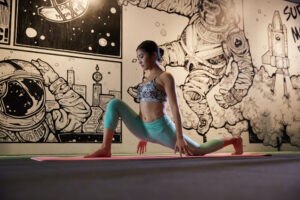
As the world’s foremost expert on Pilates for Rehabilitation, I am dedicated to addressing the frequently asked questions about this popular exercise method and its role in the rehabilitation process. Pilates has gained significant recognition as a valuable tool for improving core strength, flexibility, and overall body awareness, making it a suitable option for individuals undergoing rehabilitation. In this comprehensive guide, we will explore how Pilates helps with rehabilitation, the reasons for its widespread use in rehabilitation clinics, the 4 S’s and three pillars of Pilates that form its foundation.
How does Pilates help with rehabilitation?
Pilates is highly effective in rehabilitation due to its unique approach that focuses on core strength, stability, and controlled movements. By targeting the deep core muscles, Pilates helps improve core strength and stability, providing a solid foundation for other rehabilitation exercises. Additionally, Pilates emphasizes a strong mind-body connection, promoting body awareness and conscious control over movement. This heightened awareness allows individuals to focus on proper form and alignment, reducing the risk of re-injury and promoting safe rehabilitation.
Moreover, many Pilates exercises are low-impact, making them suitable for individuals with varying levels of mobility and injuries. This controlled and low-impact nature reduces the strain on the body during the rehabilitation process, facilitating a safe and effective recovery.
Why Pilates is used in so many rehabilitation clinics?
Pilates is widely used in rehabilitation clinics for several reasons. Firstly, its customizability allows for tailored exercise programs that suit individual needs and limitations. Pilates exercises can be modified to accommodate different rehabilitation cases, ensuring a personalized approach to recovery.
Secondly, Pilates is a safe and low-impact exercise method, making it suitable for individuals with injuries or mobility issues. This safety aspect is especially crucial in a rehabilitation setting, where protecting the body from further strain or injury is of utmost importance.
Thirdly, Pilates offers a holistic approach to rehabilitation by addressing multiple aspects such as core strength, flexibility, balance, and coordination. This comprehensive approach contributes to improved functional movement and overall well-being during the rehabilitation process.
Lastly, rehabilitation clinics typically have qualified Pilates instructors who work closely with healthcare professionals to develop personalized rehabilitation programs. This collaborative effort ensures that Pilates exercises align with the individual’s specific rehabilitation needs and goals.
What are the 4 S’s of Pilates?
The 4 S’s of Pilates represent essential principles that underpin the practice and philosophy of this exercise method:
1. Strength: Pilates focuses on developing core strength, promoting stability and support for the spine and the entire body. By strengthening the core muscles, Pilates helps improve overall body mechanics and functional movement.
2. Stretch: Pilates incorporates stretching movements that improve flexibility and joint mobility. These stretching exercises contribute to enhanced range of motion and reduced muscle tension.
3. Stamina: Pilates emphasizes endurance and stamina through controlled and precise movements. By performing exercises with focused intention and control, individuals build stamina and resilience during their practice.
4. Synchronization: The 4th S represents synchronization, which signifies the mind-body connection in Pilates. Practitioners are encouraged to engage both their minds and bodies during exercises, fostering a deeper understanding of their movements and body mechanics.
What are the three pillars of Pilates?
The three pillars of Pilates encompass the core principles that guide its practice:
1. Breath: Pilates emphasizes the importance of proper breathing techniques during exercises. Breath control helps promote relaxation, focus, and efficient movement throughout the practice.
2. Centering: Centering involves engaging the core muscles to create a stable and strong center for movement. This focus on the core supports proper body alignment and balance.
3. Control: Control is a fundamental aspect of Pilates that encourages precise and intentional movements. Practitioners are taught to perform exercises with control to prevent jerky or harmful movements.
Summary
Pilates for Rehabilitation is a highly effective exercise method that targets core strength, stability, and mind-body connection. Its customizability, low-impact nature, and comprehensive approach to rehabilitation make it widely used in rehabilitation clinics. The 4 S’s of Pilates (Strength, Stretch, Stamina, and Synchronization) and the three pillars (Breath, Centering, and Control) form the foundation of this exercise method. Pilates offers a safe and effective approach to rehabilitation, supporting individuals in their recovery and promoting improved functional movement and overall well-being.